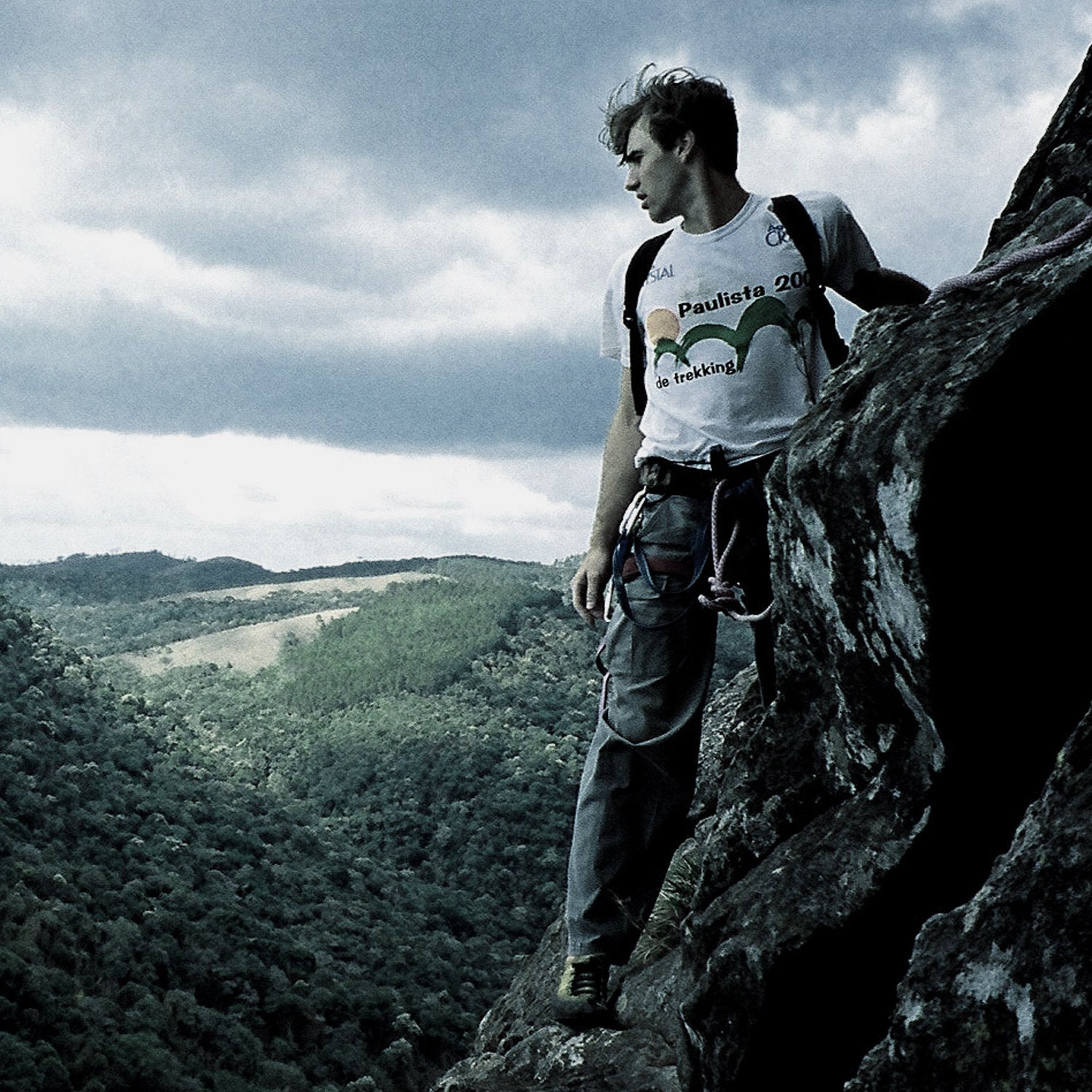Lee Sheftel’s climbing career began in 1980 during a hike up one of the Flatirons in Boulder, Colorado. That’s when he decided to scramble up some rocks on the side of the trail and found himself in the middle of a face, hundreds of feet above the ground.
“I got scared shitless. I realized that if I slipped, I was going to die,” recalls Sheftel, an accountant in Carbondale, Colorado. “So I had to climb myself out of this situation—and I did, obviously without dying. But I realized I needed to learn how to use ropes.”
Sheftel was 33 then, a very late start by climbing standards. Still, the former competitive runner who had completed marathons poured himself into it.
When he was 59, Sheftel : The Whole Shot at Maple Canyon. He was likely the oldest person to have ever done so at the time. In a sport where conventional wisdom says athletes hit their stride in their teens and 20s, Sheftel ticked a grade that was thought almost unfathomable. It made him an instant legend.
Now 68, Sheftel is still a regular at Rifle, Colorado, where he continues to climb hard. In September, he sent Eulogy, a bouldery 5.13b. For fellow late bloomers thinking about starting to climb, he has a simple message: It’s never too late.
Start with the Basics
When Sheftel got into the sport 35 years ago, climbers trained for their ascents by, well, climbing. Logging time on the rock, rather than pounding out weights at the gym, is still the best way for beginners to build essential climbing skills.
“You don’t really want to train until you know how to climb,” says Sheftel. “You don’t want to go into the gym and think that just because you can do 50 pullups, or because you can do finger-hangs with 8,000 pounds hanging from you, that you’re suddenly going to be a rock star.”
In a sport where conventional wisdom says athletes hit their stride in their teens and 20s, Sheftel ticked a grade that was thought almost unfathomable. It made him an instant legend.
Focus on training technique, rather than power. Climbing easy endurance routes lets you practice moving efficiently without straining your muscles. If you’re not averse to pulling plastic, climbing indoors is also a convenient way to up your mileage.
At the end of the day, Sheftel recommends burning any energy you have left by picking a climb you know you can do and running laps on it. If you want to incorporate bouldering into your workout, use caution: Newbies with good upper-body strength, like gymnasts, may adapt easily to the intense, dynamic moves, but less-prepared novices run the risk of injury.
Drop Those Pounds
Climbing is a struggle against gravity: The more excess fat and muscle you carry, the more weight you’ll have to haul up the wall with you. Slimming down is an easy way to get an advantage.
“If you are overweight, the first step would be to just get into general shape and get fit,” says Sheftel. You don’t need to be supermodel skinny to climb, but you’ll enjoy an instant performance boost if you can get down to your fighting weight.
Teenage climbers can get away with eating almost anything. As adults, we aren’t so lucky, as our snacking readily translates to extra pounds.
A self-described “health nut,” Sheftel eats almost all organic and, apart from a weakness for potato chips and dark chocolate, eschews junk food. As spring arrives, however, he cuts outs even those vices to drop excess winter weight.
“No bullshit,” he says. “Don’t overeat. Don’t eat too late at night.” While Sheftel doesn’t recommend pounding protein, he does down a protein-heavy drink or snack within half an hour to an hour of working out to boost recovery.
Don’t Forget to Cross-Train
Climbers do a lot of pulling, building up their upper backs, forearms, and biceps while leaving triceps, shoulders, and pectorals weak. “They overuse certain muscles and underuse others,” says Sheftel. “And not only is that bad for your posture and bad for your overall fitness, but it also can lead to injury.”
To stave off imbalances, get into the habit of working out your neglected “push” muscles. Sheftel incorporates a routine of pushups and shoulder stretching and strengthening exercises into his training. If you don’t do yoga already, consider adding a few basic poses—like – and upward-facing dog, , and —to your workout.
Train Hard, Rest Hard
Just because you aren’t a youngblood anymore doesn’t mean you can’t work out like one. “You need to be more careful. You need to warm up more. But I’m 68, and I do campusing and hangboarding,” says Sheftel. “I do all the things that these 20-year-old kids do.”
When it comes to recovering from those workouts, however, younger and older climbers are very different. “When you’re 17, 18, 19, you just go to sleep at night and you’re rested,” says Sheftel. In contrast, Sheftel takes two to three days off after a hard climbing session.
With Age Comes Wisdom
Older adults may not be as resilient or quick to pack on muscle as climbers in their teens or 20s, but they have one definite advantage: patience.
“Many times, you get these young climbers and they’re just impatient,” says Sheftel. “They’re impatient on the rock; they rush their moves. They get impatient about sending the route.”
Climbing can be a frustrating sport, especially for beginners who feel like they’re making little progress for how much effort they’re putting in. But resist the urge to overtrain, focus on the long game, and the gains will build up.


